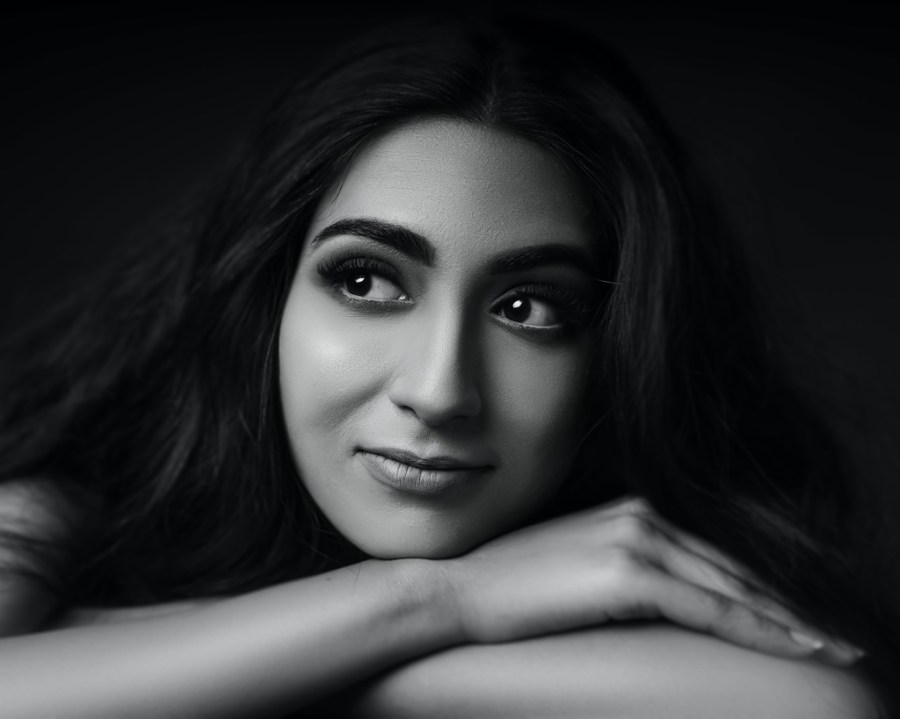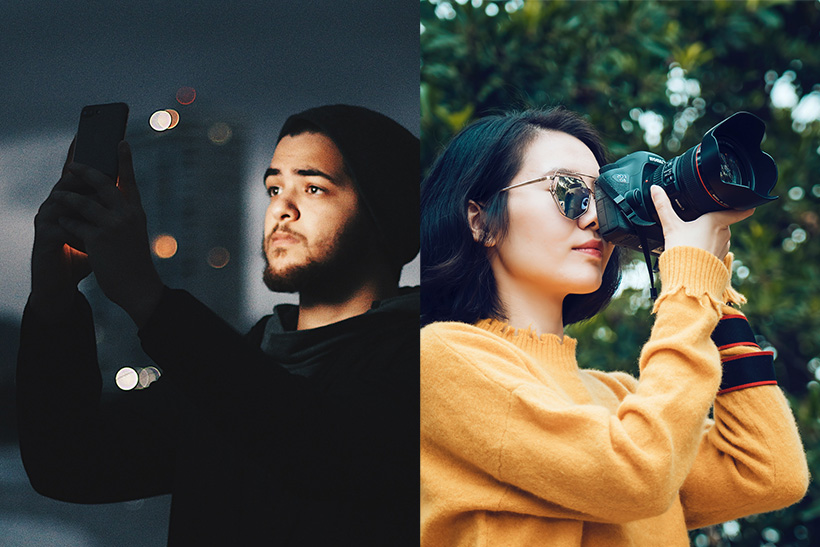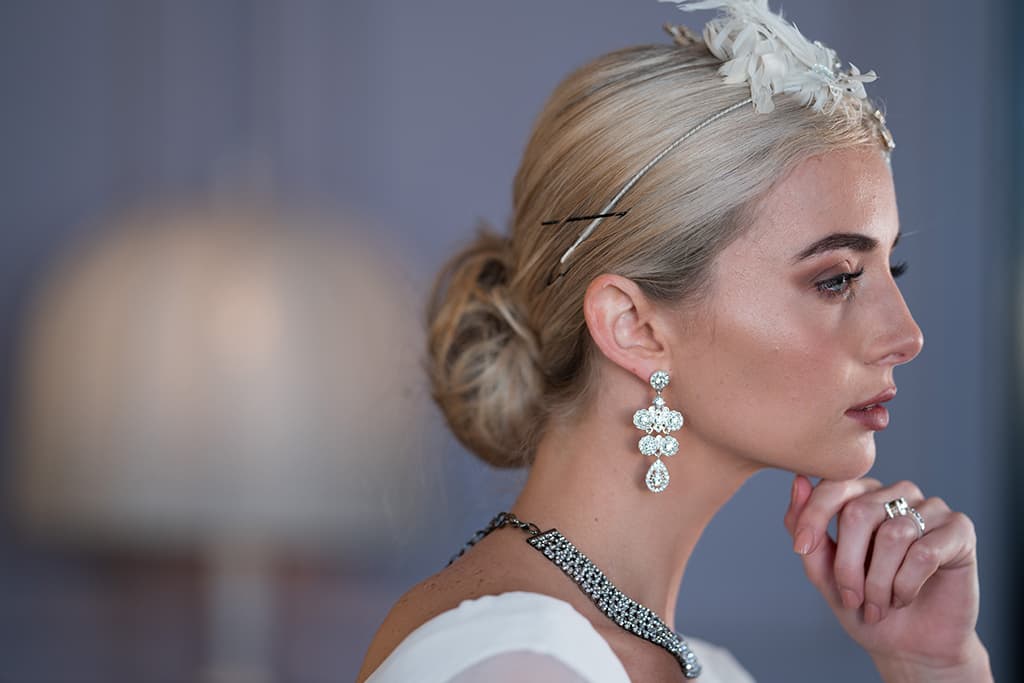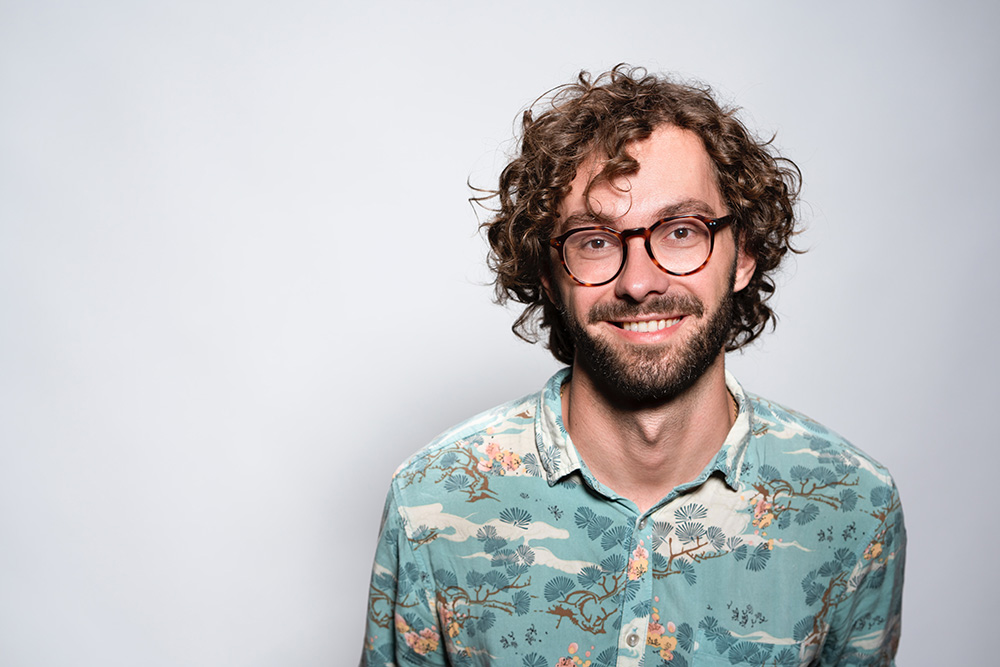There are times when travelling for a photoshoot may not be possible or ideal. Fortunately, as Ian Farrell reveals, you can shoot amazing and creative portrait photos at home.
Good portraits don’t have to be over-complicated. Stylised fashion, bursting at the seams with fantasy narrative and exotic wardrobe, is all very impressive, but all that detail competes with the subject.
There is a beauty to keeping things uncomplicated and letting your subject be the focus of all the attention. Not to mention that adhering to a simple style makes pictures far more achievable.
Simplicity and easy are not the same thing, and achieving this look requires some practice, skill and talent. But you don’t need a studio full of flash lighting and expensive accessories to shoot beautiful portraits. A window, a reflector and a cloud-bright day will do just fine.
This article will take you through how to shoot portraits from the comfort of your own home and more.
Shoot Portrait Photos at Home: Choosing a Camera
Equipment-wise, use whatever is handy. Be it with a camera, lens, tripod, instant camera, smartphone – any of these will do. Remote photography is another option. To learn more about this read our article on how to take amazing portraits on a smartphone.
Shoot Portrait Photos at Home: Choosing a Lens
If you are using a camera, a fast, short-telephoto lens has always been the optic of choice for portrait photographers, and for good reason.
Telephoto lenses tend to compress perspective, making objects appear closer together than they really are. In portraiture, this translates as making over-prominent noses and chins smaller – which has to be a good thing, right?
Combined with a fast aperture, short telephoto lenses also make it easier to restrict depth of field. Limiting sharpness to the eyes, and letting everything else drift out of focus, makes a powerful statement. It is often said that the eyes are the windows to the soul, and this is never more true than in portraiture.
Telephoto lenses also enable you to fill the frame with your subject without having to get physically too close to them. Cropping in tight is a great way of making impact and drawing attention to the eyes, but very close proximity can make your sitter feel awkward or tense, which will show on their face.
Check out this list of the best lenses for portrait photography.
On full-frame digital cameras, and for those shooting film, a fast, short telephoto lens means something like an 85mm f/1.8 (or wider). If you own a fast standard zoom optic then the long end of this will be almost as good, though you’ll be using it wide open to limit depth of field, where optical quality is least impressive.
Often, the point of having a very fast lens, like an f/1.4 or f/1.8, is to enable the photographer to shoot at f/2 or f/2.8 without being wide open, thereby increasing image quality.
Such lenses can be very expensive, but cropped-frame DSLR users have an alternative. The humble 50mm standard lens, available in some cases for around £100 brand new, provides an angle of view equivalent to between a 75mm and 100mm lens on a full-frame camera, depending on the model.
This will give you a good working distance, and a wide aperture of f/1.8 or even f/1.4 will enable you to control depth of field. Really, there is no excuse for a portrait shooter not to have one of these gems in their bag!
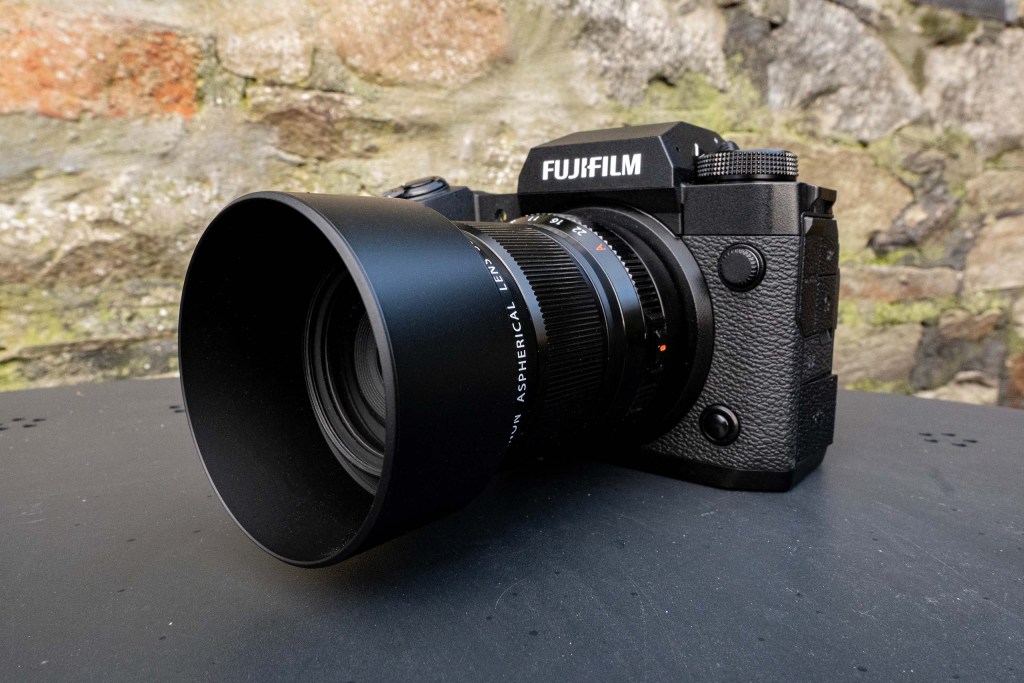
The Fujifilm 30mm F2.8 macro lens, here mounted on the Fujifilm X-H2, gives an equivalent focal length of 46mm, it’s close to a “nifty fifty,” which makes it well suited to a range of different subjects including portrait photography. Photo credit: Amy Davies.
Alternatively, look at macro lenses. Although they are designed to magnify tiny objects in close-up photography, they are often slightly telephoto (100mm is best), fast (apertures of f/2.8 aren’t unusual) and obviously capable of letting you get very close to your subject indeed.
For the pictures in this article, I used a 105mm f/2.8 Nikon macro lens at an aperture of f/3.5 to restrict my depth of field and enable me to concentrate focus on my subject’s eyes only. By raising the ISO sensitivity to ISO 400, I managed to get a shutter speed of 1/125sec, which, for me, is just about handholdable.
Of course, you won’t always want to shoot with a wide-open aperture, but when stopping down be aware that slow shutter speeds may mean you need to resort to a tripod to avoid camera shake.
See more of the best budget portrait lenses
Shoot Portrait Photos at Home: Settings
With your equipment chosen, it’s time to think about settings, starting with exposure. I’m going for a slightly high-key look, where most of the tones are lighter than mid-grey. This suits my subject’s pale skin and blonde hair, as well as the white wall that I’ll be using as a background.
Measuring the exposure for this scene using my DSLR’s built-in metering gave me a result that was far too dark. Cameras don’t expect to see white. They expect to see mid-grey and tend to set exposures that make everything look this way.
I was careful to pay attention to the histogram display on the back of the camera and adjust my exposure manually until the tones were in the right half of the graph, but not so far as to run off the end. You can also use exposure compensation to do this.

Use a reflector to fill in shadows and even out brightness across the face. Photo credit: Ian Farrell.
I tend to shoot pictures like this in raw format to give me more options in post-production. However, I’m a big fan of using my DSLR’s settings to control various aspects of the shoot. Tweaks to contrast and saturation settings let me simulate what I’m hoping to achieve later in the digital darkroom, so that what I see on the camera screen is at least in the right region.
For simple portraits of this style, I tend to reduce saturation somewhat to soften skin tones. This can be combined with an increase in contrast for a really punchy, fashion-like look. For this type of high-key work, though, I want to turn the contrast down to avoid blowing out my highlights as I raise the exposure.

While you can turn your image into black and white in post-production, the ability to see your image in black and white on the back of the camera can be useful. Photo credit: Dane Wetton via Unsplash.
Another useful in-camera setting is the Monochrome picture style. While shooting in raw means that the file is actually captured in full colour, the ability to see the image in black and white on the back of the camera can be invaluable.
Good white balance is crucial to getting realistic skin tones in all shades. It is best achieved by shooting at least one frame that includes a grey card. Then, it can be used as a neutral reference point to set the white balance for all other frames shot under those conditions. In fact, if you want one reason why shooting raw will improve your portraiture, this is it.
Shoot Portrait Photos at Home: Lighting

By having more light on the background than the subject, you end up with a stark white backdrop. Photo credit: Ian Farrell.
When it comes to picking a location for a daylight portrait, a north-facing window is perfect. What we don’t want is direct sunshine bursting into the room. It’s far too high-contrast for this type of work and best avoided.
If you can’t find a north-facing window then be aware that the times you can shoot may be dictated by the location of the sun and the availability of cloud.
As for the location for your home portrait studio, you’d surprised at what 30 minutes of moving furniture around can do. I shot these pictures in an attic bedroom after moving the bed and a desk out of the way so I could use a white wall opposite a skylight window.
Also consider rooms with large French windows, or bay windows that surround your subject. You can always blank-off other windows with blinds or boards (a massive polystyrene board is about £12 from B&Q) to stop light coming from other directions.
It will take some experimentation to find the best relative positions for your sitter and light source.
Placing your subject with the window to their side is a good start. You’ll notice that the light fall-off across their face will increase the nearer to the window they sit. You can then fill in shadows by positioning a reflector on their other side.

Think about how light is interacting with your background. By positioning your subject against a brighter light than the backdrop you will get a grey background. Photo credit: Richard Jaimes via Unsplash.
Alternatively, try putting the window behind you, using it as a front-on light source. You’ll need a big window for this to work, but the results can be amazing.
Also think about how light is interacting with your background. You will always be exposing for your subject. By positioning them in brighter light than the backdrop you will get a grey background in the final picture – even if the wall you are using is white.
If the background wall is in brighter light than your sitter, then it will appear as bright white.
Tianna J Williams shares some of her portrait lighting secrets.
How to Shoot Portrait Photos at Home: Shooting the pictures
So that’s the theory – what about the shoot itself? Remember that most people are nervous about having their picture taken. In fact, some rank the whole experience up there with going to the dentist or doing their tax return. For this reason, talking to your subject is essential.
You don’t have to be the world’s best stand-up comedian. But do keep telling them what is going on and what you are about to do. And back this up with positive comments about how well things are going, even if they’re not. Check out this article for more of the do’s and don’ts of working with models.
Rather than mess about with things and look unprofessional, it’s better to have a break every 10-15 minutes to give your sitter a break. You can also make any changes then. Try different compositions, crops and aspect ratios, and vary your height relative to your subject. It’s amazing how looking at a face from slightly above and slightly below can change a portrait.
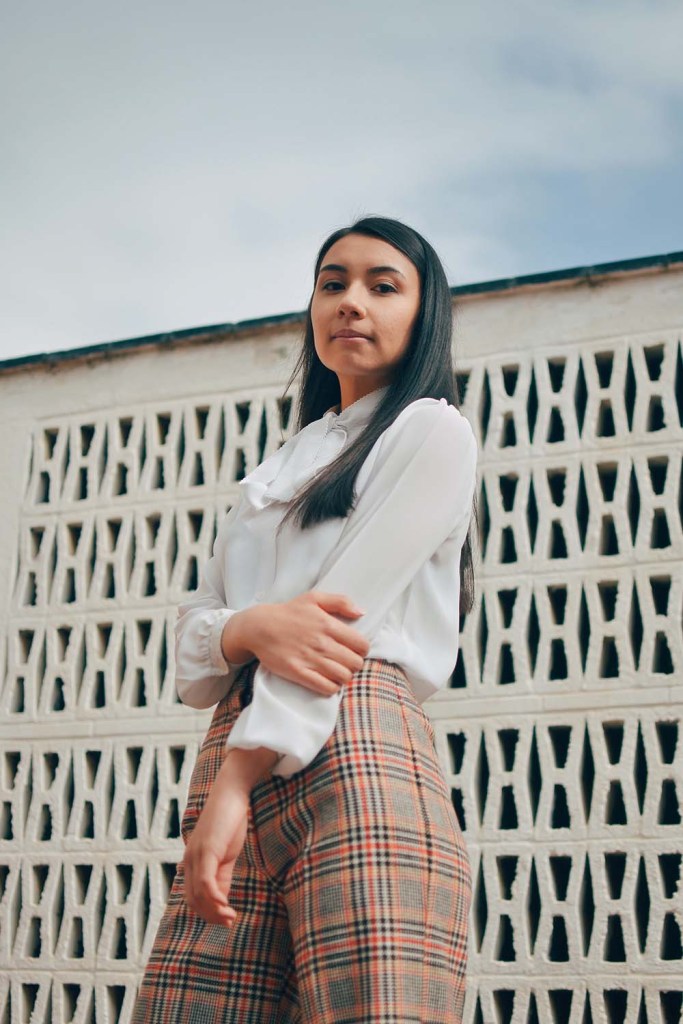
It’s amazing how looking at a face from slightly above and slightly below can change a portrait. Photo credit: Stephanie Cook via Unsplash.
Thinking about the equipment and technical side of the shoot in advance should mean that you can now dedicate your attention to your subject, and to shooting a simple, quality portrait of them.
Keep shooting pictures all the time. This is the beauty of digital photography after all. And if you see a good expression, capture it. Don’t hesitate. Then worry about whether you focused correctly or not in the second frame. As the great portrait photographer Lord Snowdon once said: ‘It’s no good saying, “Hold it” to a moment in real life.’
How to Shoot Portrait Photos at Home: Natural posing in portraiture
When starting out in portraiture, many photographers struggle with posing someone. How should my subject be standing? What should they do with their hands?
The problem here is that, if you try to take on all of the responsibility for how your sitter is looking, they will look forced and unnatural. It’s much better to observe how someone behaves when they are not being photographed.
Look at how your subject behaves when they come into the room where you are going to shoot. They may be nervous and unable to relax, but you’ll get a feel for how they like to stand and what they do with their hands when they aren’t consciously thinking about them. In my own portrait photography I find that most of the best poses come from the subject themselves, even if they don’t know it.
When reading a person in this way, a good tactic is to fake a technical error of some kind. Apologise that you’ll need just a few seconds, then watch what your subject does when they relax.
Of course, a nervous subject can still make a good picture. Many photographers, from the late, great Irving Penn through to the thoroughly modern and inspiring Julia Fullerton-Batten, capture the awkwardness of their subjects to wonderful effect. Check out Fullerton-Batten’s work on her website.
How to Shoot Portrait Photos at Home: Ian Farrell’s top portrait photography tips
- Focus is on the eyes: With shallow depth of field being used to render other parts of the face blurred.
- Use a plain background: A white wall can be used for a background so your subject stands out.
- Don’t say cheese: People don’t walk around in their daily lives smiling all the time. Don’t feel that your sitter has to pose smiling all the time either.
- Take it easy: Regular breaks will help you and your sitter relax into the shoot, so new ideas for poses will come naturally. It’s easy to become creatively exhausted.
- Don’t forget to experiment: Try shooting in profile, or from above you subject. You can still keep the element of the portrait very simple while experimenting wildly with viewpoint or composition.
- Play with compositions: Try your subject in the middle of the frame, off-centre, on a ‘third’ looking into empty space. Or looking out of the frame, and so on. Don’t be afraid to crop the top of their head off either. This can make them look bigger in the frame.
Featured image: Photo credit: Rachel McDermott via Unsplash.
Related articles:
Beginners guide to Portrait photography
Best budget portrait lenses in 2023
Best portrait photography advice from the pros
How to take amazing portraits on a smartphone

